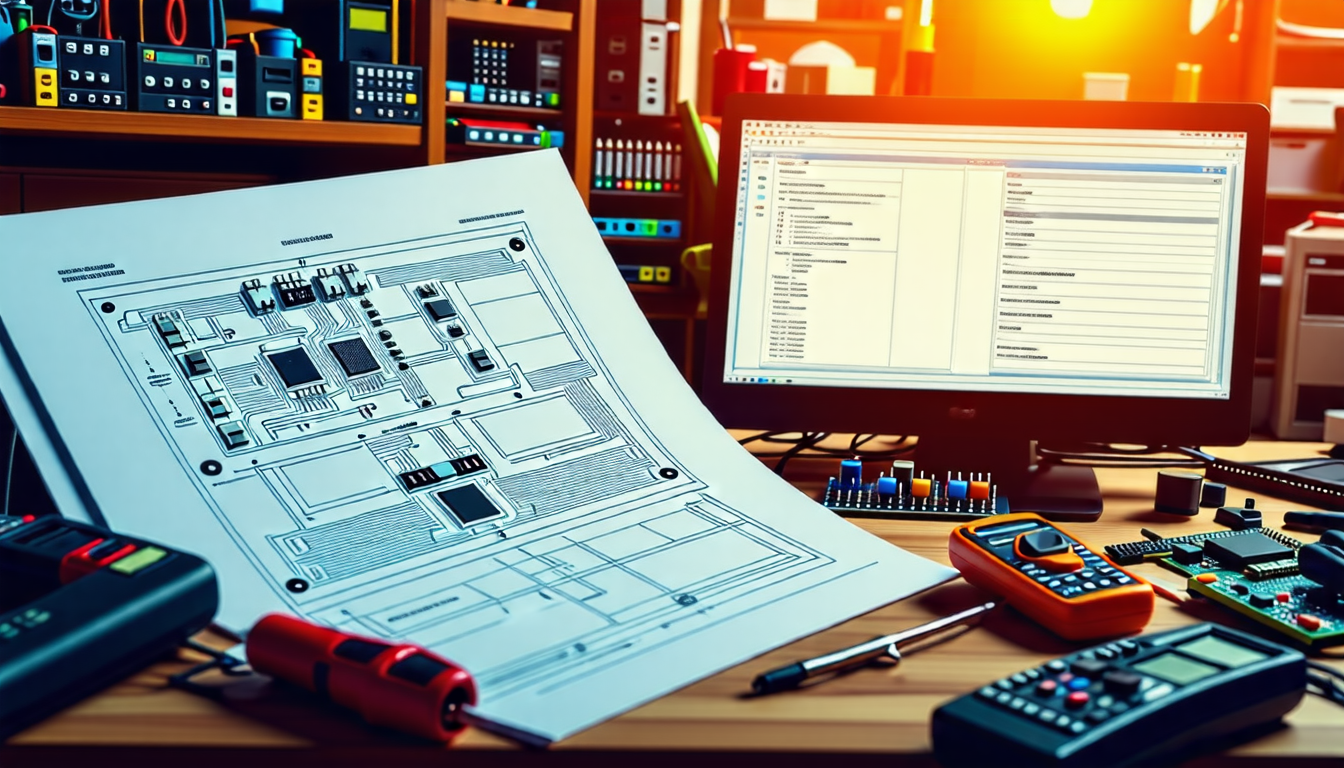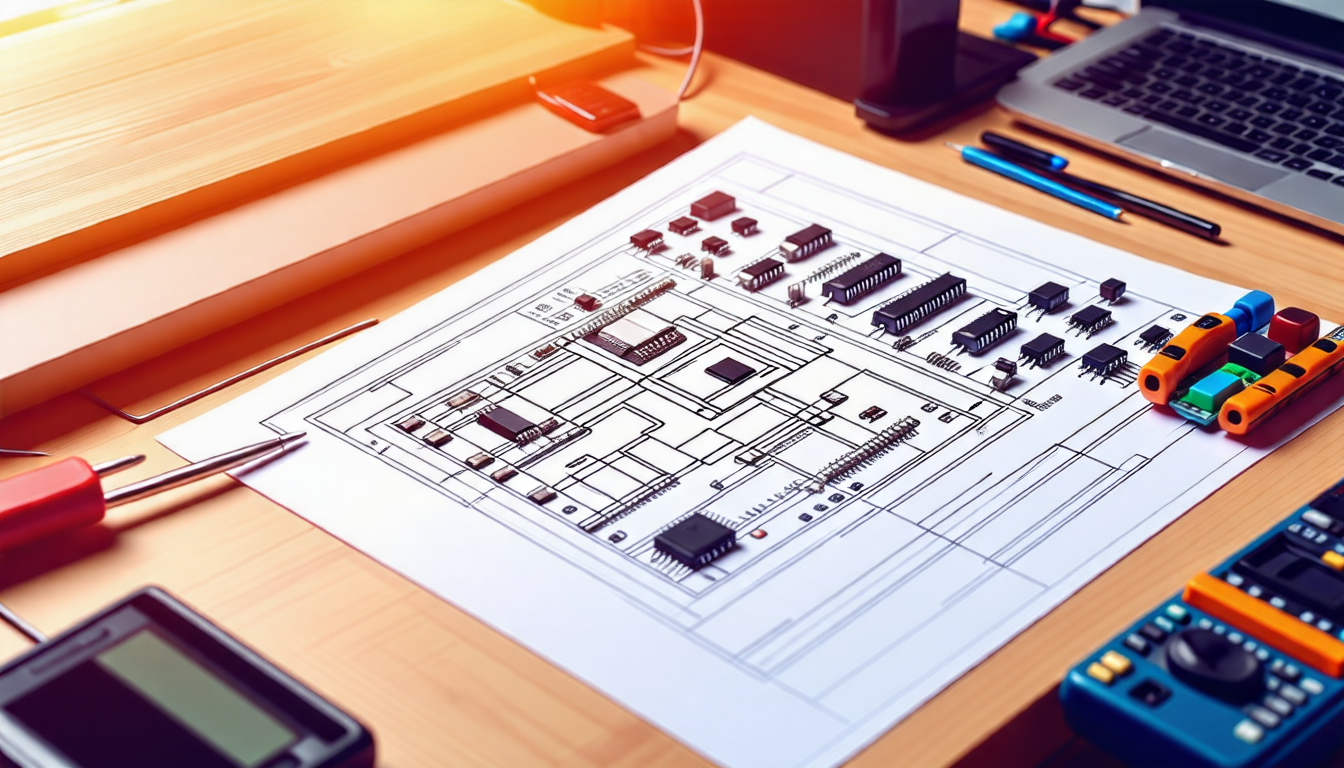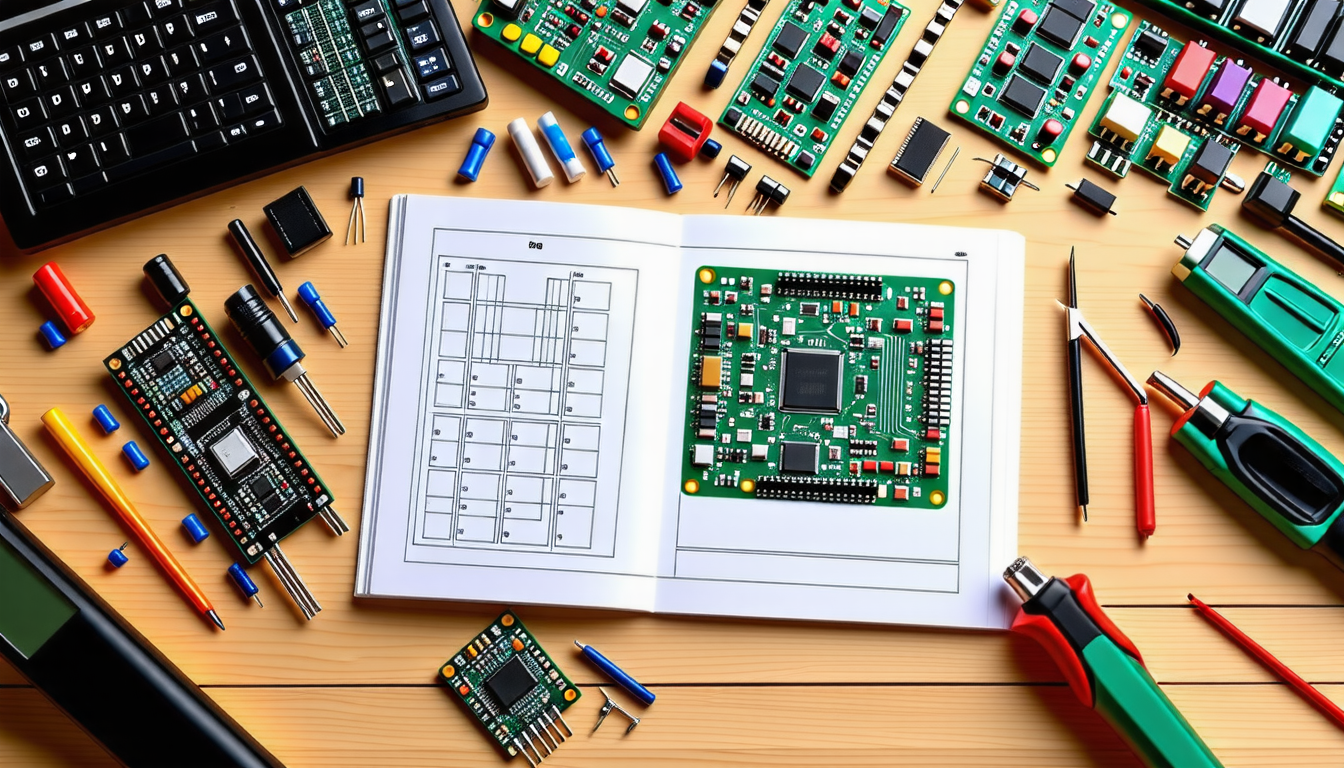|
IN BRIEF
|
Welcome to the intricate world of PCB design, where every decision can shape the fate of your electronic masterpiece! In this journey, the selection of the right components is akin to assembling the perfect recipe; each ingredient plays a pivotal role in the final outcome. With a plethora of options at your fingertips, navigating through voltage ratings, current capacities, and package sizes may seem daunting. However, fear not! By honing in on essential parameters, you can streamline your choices, ensuring compatibility and efficiency. This guide will illuminate the path to informed decisions, revealing essential tips and insights to empower your design process. Dive into the art of component selection and watch your PCB designs come to life.

Understanding the Basics of Component Selection
When embarking on a PCB design project, it’s essential to grasp the fundamental criteria involved in component selection. The right components ensure your design functions effectively and efficiently. They are pivotal in avoiding complications during assembly or operation. By considering various factors such as voltage ratings, current ratings, package sizes, and temperature ranges, you can ensure compatibility and reliability within your design.
Price and Availability as Initial Filters
One of the first steps in component selection is establishing a budget. Pricing can often eliminate an overwhelming number of choices. By using filtering tools that allow you to sort components by their cost, you can quickly narrow down the options. Furthermore, availability plays a critical role in procurement. If components are out of stock or have long lead times, they can significantly delay your project. Always check the current stock status of potential components to streamline your selection process.
Evaluating Technical Specifications
After filtering components by price and availability, it’s crucial to delve deeper into their technical specifications. Check the voltage ratings and current ratings to ensure they align with your project’s requirements. Lack of attention to these details can lead to component failures, rendering your PCB non-functional. Additionally, examining package sizes is essential to ensure they fit your design layout and adhere to manufacturing capabilities.
Temperature Range Considerations
Temperature ranges are another critical parameter to evaluate. Various electronic components exist within different environments and can experience fluctuating temperatures. Ensure the components you select can withstand the thermal conditions they will be exposed to during operation. This consideration is especially important in applications involving high power or proximity to heat sources.
Utilizing a Bill of Materials
A Bill of Materials (BOM) serves as a foundational document for electronic component procurement. It lists all necessary components required for the assembly of your PCB. Having this list streamlined can facilitate the selection process. The BOM helps to identify not just the components but also alternatives that can achieve similar functionality. This flexibility is critical, as availability changes can occur, and having substitutes lined up can keep your project timelines intact.
Reference Designators and Their Importance
Each component in your BOM should be assigned unique reference designators, which simplify identification during assembly and testing. Using standard notations makes it easier for engineers to cross-reference components and troubleshoot issues. The careful organization of your BOM with these designators enhances communication within your development team.
Choosing Components for Performance
As you delve even deeper into component selection, performance metrics become a priority. Performance implies not just how components function but their ability to interact effectively with each other within the PCB layout. For instance, selecting resistors and capacitors that work harmoniously can help maintain signal integrity.
Consider Manufacturer Specifications and Reviews
Peering into manufacturer specifications offers a more comprehensive understanding of how components perform under different conditions. Examine datasheets for detailed information about the part testing process, quality control, and reliability assessments. Additionally, industry reviews and community feedback can provide insights regarding real-world performance, helping you to avoid common pitfalls.
Manufacturer Reliability and Support
Choosing reputable manufacturers can influence component reliability. Established companies typically provide superior support, warranties, and a record of quality assurance. It is wise to invest in components from skilled manufacturers who can back their products. Doing so can save time, minimize the risk of defects, and enhance the overall quality of your PCB.
The Role of Design Tools in Component Selection
Modern PCB design tools have evolved to include powerful features that ease the component selection process. Most software platforms come equipped with libraries that contain part numbers, specifications, and even integration suggestions. Leveraging these tools properly not only streamlines the task but can also mitigate risks associated with mismatched components.
Accessing Standardized Libraries
Utilizing standardized libraries enhances efficiency substantially. These libraries already contain rigorous testing and validation data about components. Therefore, a PCB designer can quickly ascertain what works best with existing designs without starting from scratch. When selecting from these libraries, consider scalability and the future impact of any performance constraints.
Component Placement Considerations
After selecting your components, the next step is establishing a strategic placement on the PCB. This stage is critical in ensuring your design is both functional and manufacturable. Component placement affects signal integrity, thermal management, and overall performance of the device.
Following Placement Guidelines
Establishing guidelines for placement can streamline the assembly process. Certain rules of thumb suggest keeping related elements close together, ensuring adequate spacing for thermal dissipation, and adhering to routing guidelines. Component placement should also consider manufacturing processes; excessive complexity can increase the likelihood of errors during assembly.
Thermal Management through Placement
It’s important to remember heat distribution when placing components. High-power components need ample space for heat sinks and airflow. Positioning these components far away from sensitive parts can prevent overheating and ensure reliable operation over time. Proper thermal management through thoughtful placement is a vital part of effective PCB design.
Common Mistakes in Component Selection
Even seasoned engineers may encounter pitfalls in selecting components. Awareness of these common mistakes provides an advantage in successful PCB design. One major misstep involves underestimating the importance of thorough testing. Failing to prototype or validate the component performance in real-world scenarios can jeopardize the entire project’s success.
Ignoring Future Upgrades
Another error involves overlooking the potential for future upgrades or scalability. Always consider how the chosen components might influence future designs. Selecting components solely for their current application can limit the evolution of your product. Be mindful of how choices today reflect the viability of your design tomorrow.
Procuring Components Efficiently
Effective procurement enhances not only the quality but also the speed of PCB assembly. Having reliable sources is crucial; this improves both cost-effectiveness and resource availability. Building relationships with suppliers can facilitate smoother transactions and ensure that you have reliable access to vital components.
Managing Lead Times
Understanding lead times is essential for efficient component procurement. Some components may have lengthy lead times, while others may be available for immediate shipment. Adjusting your design timetable to accommodate these lead times can significantly reduce potential delays in your project. A proactive approach can mitigate risks associated with unexpected stock shortages.
Using Community Resources
Collaboration with community platforms like Ragworm can also simplify component selection. Accessing shared resources, experiences, and industry knowledge enhances your decision-making process. By tapping into community wisdom, you should facilitate smarter selections and better outcomes for your PCB projects.
Collaborating with Design Teams
Collaborative efforts within design teams can improve component selection and placement. Engaging with electrical engineers, PCB designers, and manufacturing experts fosters a holistic environment where diverse perspectives converge. Teams collaborating from the outset of the design process tend to yield superior results.
Effective Communication and Idea Sharing
Establishing an open line of communication allows team members to share insights and address potential concerns early on. This teamwork promotes a culture of thoroughness and diligence, minimizing issues and enhancing overall project quality. Engaging everyone in the component selection process helps ensure no aspect is overlooked before construction begins.
Documentation for Future Reference
As you progress through the component selection process, maintaining meticulous records is essential. Proper documentation enables you to revisit your choices and understand the rationale behind decisions made at each stage of the design. This information serves as a valuable reference for future projects, making it easier to replicate successful designs or learn from past mistakes.
Reviewing and Updating Documentation
Make prioritizing regular reviews of your documentation a standard practice. As technology evolves and new components become available, updating your records is necessary to stay current. This diligence ensures your design practices remain competitive and aligned with industry standards.
Final Thoughts on Component Selection
Engaging with the community, utilizing advanced planning, and fostering collaborations are integral to the component selection process. Effective PCB design is within reach when engineers become proactive about their choices and mindful of future implications. Continuous learning and adaptability can lead to enduring success in electronic design and manufacturing.

When selecting appropriate components for effective PCB design, it’s essential to prioritize criteria that can significantly influence the functionality and reliability of the project. Firstly, voltage and current ratings are crucial. Components must fit the electrical specifications to prevent failures. For instance, a mismatch in voltage can lead to catastrophic component failure, causing damage to the entire circuit.
Furthermore, consider the package sizes. The physical dimensions affect how components can be arranged on the PCB, which in turn influences the layout design and the overall performance of the system. Compact designs may limit options, so engaging with tools that filter these parameters is advisable. In fact, designers often face situations where hundreds of components still meet the criteria.
Next, addressing the temperature ranges is vital. Components not suited for thermal loads can malfunction or degrade over time. In 2023, it’s estimated that only 70% of electronics meet stringent thermal stress tests, highlighting the importance of choosing parts wisely.
Finally, utilizing a Bill of Materials can streamline component selection. This strategic approach aids in managing costs effectively and supports reliable sourcing through platforms like Ragworm, which connect designers with necessary resources. For further details on prototyping and community support, explore this guide.

Choosing the right components is crucial for achieving optimal performance in your PCB design. Start by considering essential parameters such as voltage ratings, current ratings, and temperature ranges. Use a robust Bill of Materials to keep track of potential part selections and be mindful of manufacturing capabilities to avoid design violations. During the design phase, prioritize components based on availability and footprint, allowing for efficient procurement. Familiarize yourself with reference designators to streamline your review process. Remember, early-stage decisions influence the efficiency of assembly and manufacturing. With diligence and foresight, you can ensure that your PCB stands the test of time and function.
FAQ
What are the key parameters to consider when selecting components for PCB design?
R: When selecting components, it’s crucial to pay attention to parameters such as voltage ratings, current ratings, package sizes, and temperature ranges to ensure they are compatible with your design.
How can I narrow down my component options?
R: You can simplify your search by filtering components based on price, availability, and footprint. However, it’s not uncommon to still be left with a large selection, sometimes up to 200 parts.
Why is the design phase important for component selection?
R: The design phase is critical as it allows you to make informed decisions about which components to use, considering compatibility and function before advancing to manufacturing.
What common mistakes should I avoid when choosing components?
R: Avoid overlooking manufacturability and failing to apply design rules that have been set. Ensure to address any indicated violations during the design process.
How can a bill of materials (BOM) aid in component selection?
R: A bill of materials is essential for managing parts effectively, as it lists all components required for your PCB. Reviewing reference designators within the BOM can also help streamline the selection process.

